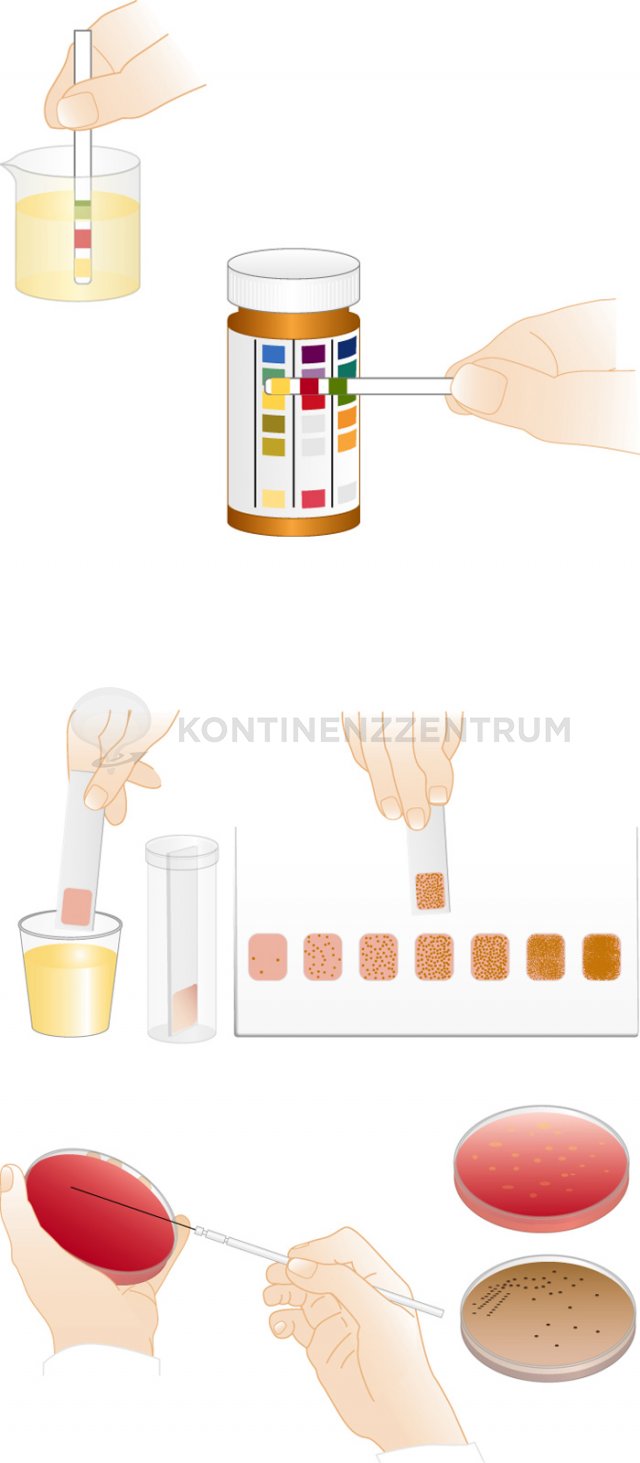Urinalysis
Laboratory test for bladder infection or blood in the urine

Before a neurourological examination, the urine is examined in the laboratory to avoid misinterpretation due to cystitis.
By determining the pH value, the examiner can recognize whether the urine is acidic, neutral or alkaline.
If only red blood cells are found in the urine, this may indicate a tumor in the urinary tract. In this case, further examinations are always necessary. If sugar is found in the urine, this may indicate diabetes mellitus, in which case further clarification is also advisable. If the urine test shows traces of protein, this may indicate a kidney disease.
However, the main reason for a urine test is the suspicion of cystitis (bladder inflammation / bladder infection). Important parameters for this are the nitrite test and the number of white blood cells in the urine. If there is no urinary tract infection, the nitrite test is negative and no white blood cells are found in the urine. Normally, the chemical compound nitrate, a metabolic waste product that is excreted into the urine via the kidneys, is found in the urine.
If bacteria have managed to enter the urinary tract, some types of bacteria can convert the compound nitrate to nitrite.
The presence of nitrite in the urine can therefore also indirectly detect bacteria in the urine.
Bacteria in the urine alone do not cause cystitis.
It is the body's immune response to the bacteria that triggers inflammation.
White blood cells are released from the bladder wall into the urine to fight the bacteria.
Taken together, the detection of white blood cells and nitrite in the urine are a strong indication of the presence of cystitis and should be followed by further urine tests.
